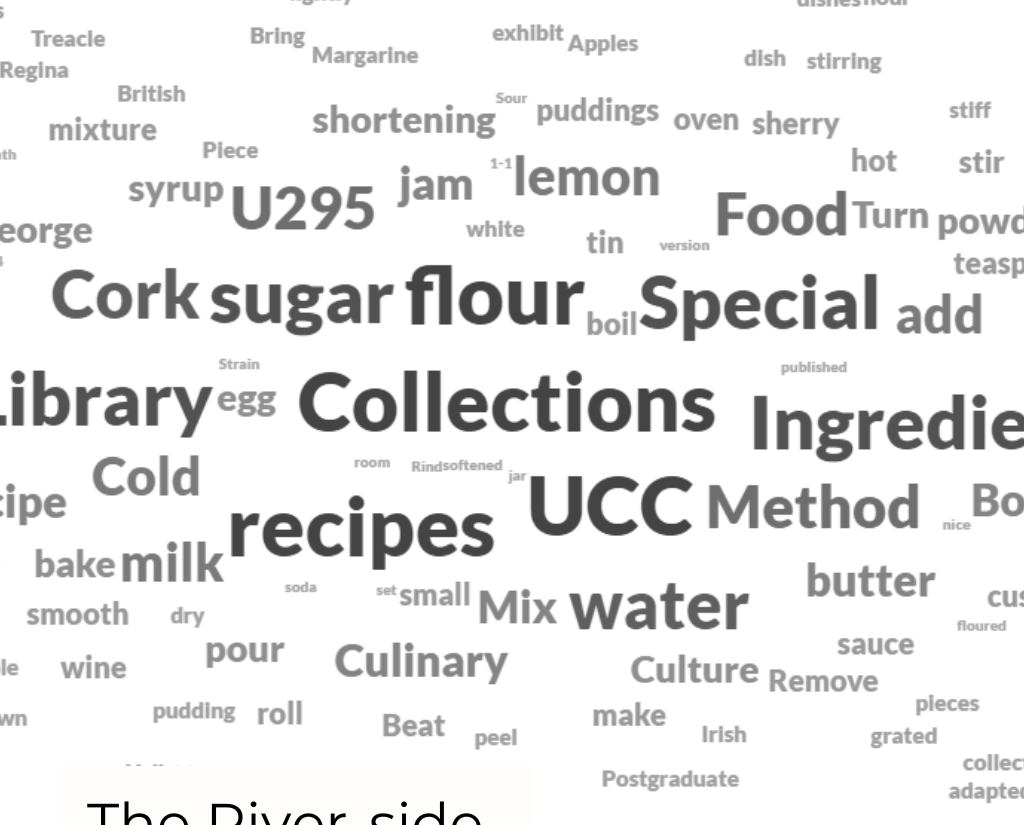
The River-side welcomes this guest post from Cara Long and David Leen, student workers with the Academic Communication and Technology team in UCC Library. Cara is a final year Business Information Systems student, and David is studying Sustainability in Enterprise.
Introduction
As part of our time as Student Help Assistants in UCC Library, we worked on many projects for different departments. One of the projects that we had the opportunity to work on was for Special Collections. The project was surrounding International Pi Day. We created a digital interactive book Historical Recipes in the Digital Age containing different historic recipes from the era of George Boole (mid-19th century) and from Mrs. Anne Ryan (late 19th century to early 20th century).
Before we began to format and publish the recipes and information online, we needed to sit down and decipher 19th century handwritten recipes from scans of manuscript recipe books held in Special Collections. We had to research what different terms meant, for example the words ‘Treacle’ (see ‘Orange Curd’ recipe) and ‘Dripping’ (see ‘A Plain Apple Charlotte’ recipe).
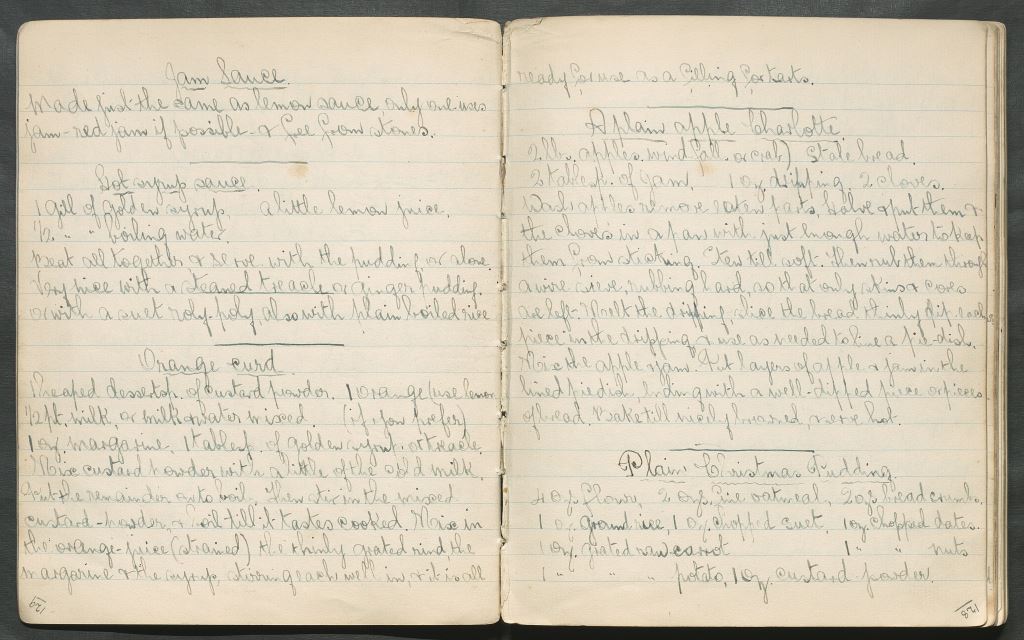
Using Scalar
Throughout the process of creating our interactive book we used a website called Scalar. Scalar is a free, open source publishing platform. The idea behind Scalar is to make the creation of long-form multimedia scholarship easy to produce by assembling media from multiple sources. The system is designed to be used by those with little technical experience, opening more options for those who may be uncomfortable with complicated media technology.
In our experience, this ease of access was not apparent. The tutorials covered the basic aspects of the software but failed to explain some of the software’s most important features. We found it difficult to figure out which image options best suited our needs based on the tutorials, resulting in a lot of trial and error. Linking the different ingredients in the way we wanted also took more effort than we had expected. We both have experience with such software and still found it difficult. It is unlikely that people little technical experience would find the Scalar experience to be the intuitive, accessible one which the creators envisioned.
The features offered by the software are extremely interesting. As noted, the software allows for articles to be linked according to a variety of keywords or ‘tabs.’ This allowed us to link our recipes according to their various ingredients. We also considered linking by cooking styles and measurements. For example, we could have linked our recipes by key words e.g. ‘1 cup’ or ‘1/2 a pound,’ but we found it best to link our recipes by ingredients that the recipes had in common. This also allowed us to learn what was popular in the 19th century and we could see how an ingredient was popular in many dishes.
Scalar: Connections Visualisation
Although we found Scalar to be difficult to navigate and learn, the visualisation tool was a feature that helped us to see how each page, tag and path were interconnected. Below is a figure which depicts a visualisation of our own Scalar project. The blue circles are paths, which represent a linear sequence of content like the chapters of a book. The orange circles are pages, which in our case are the recipes. A single page can belong to multiple paths. The red circles are tags, which are also single ingredients. This visualisation helps us to see how our project is linked.
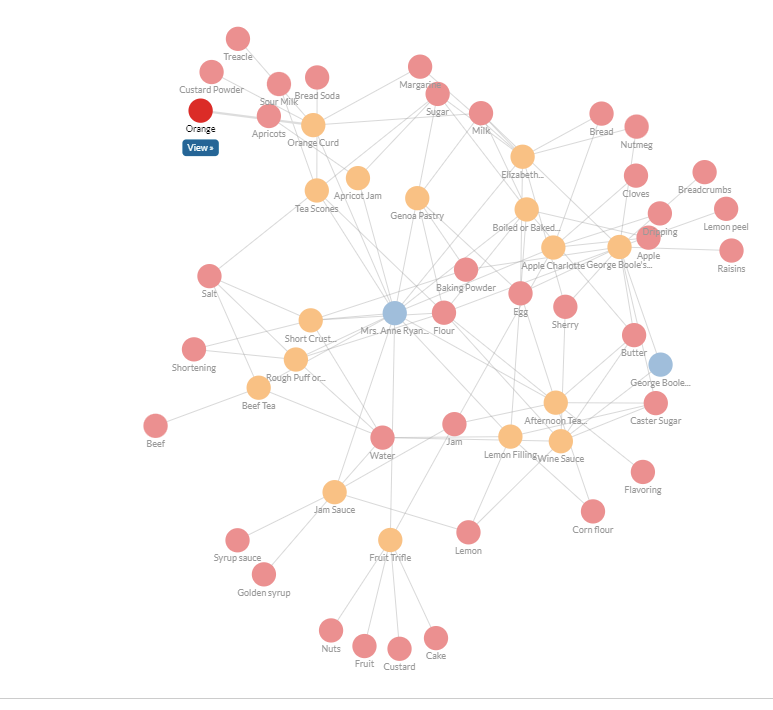
Scalar: Word Cloud Visualisation
Throughout the project we were also able to use a Word Cloud visualisation which showed us the most common and popular words that we used within our Scalar project was. As you can see below, some the words we used the most while creating our project were Collections, Ingredients, Flour, UCC and Recipes.
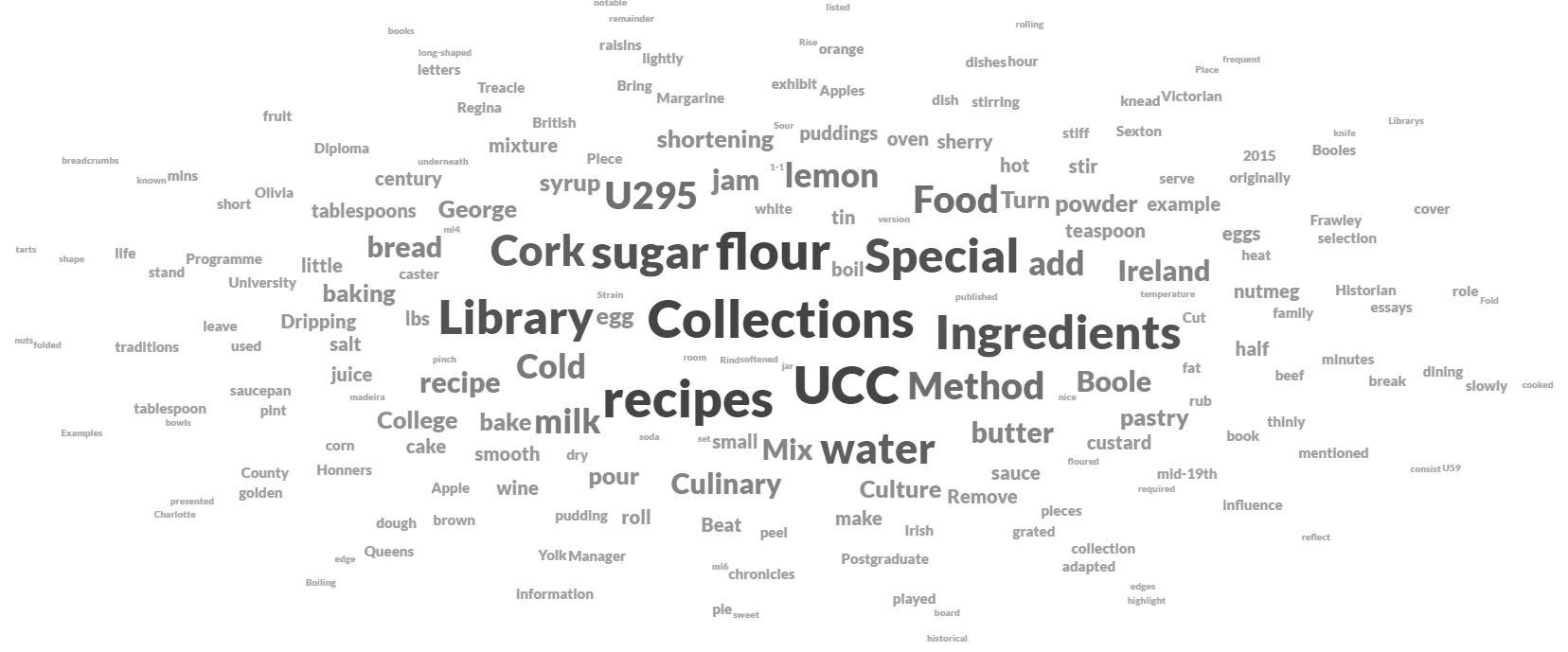
Reading Handwritten Documents
Another challenge that we faced while working on this project was the ability to read the handwritten recipes from Special Collections. As most of these recipes had been hand-written in the mid-19th century it was tricky for us the decipher what the recipes said. We were kindly given many scans of different recipe books from Special Collections Librarian, Elaine Harrington, but unfortunately, we could only successfully read one. An example of the recipe books that we could not make out is a red bound notebook with marbled endpapers. It included recipes for cough medicines and other home remedies.
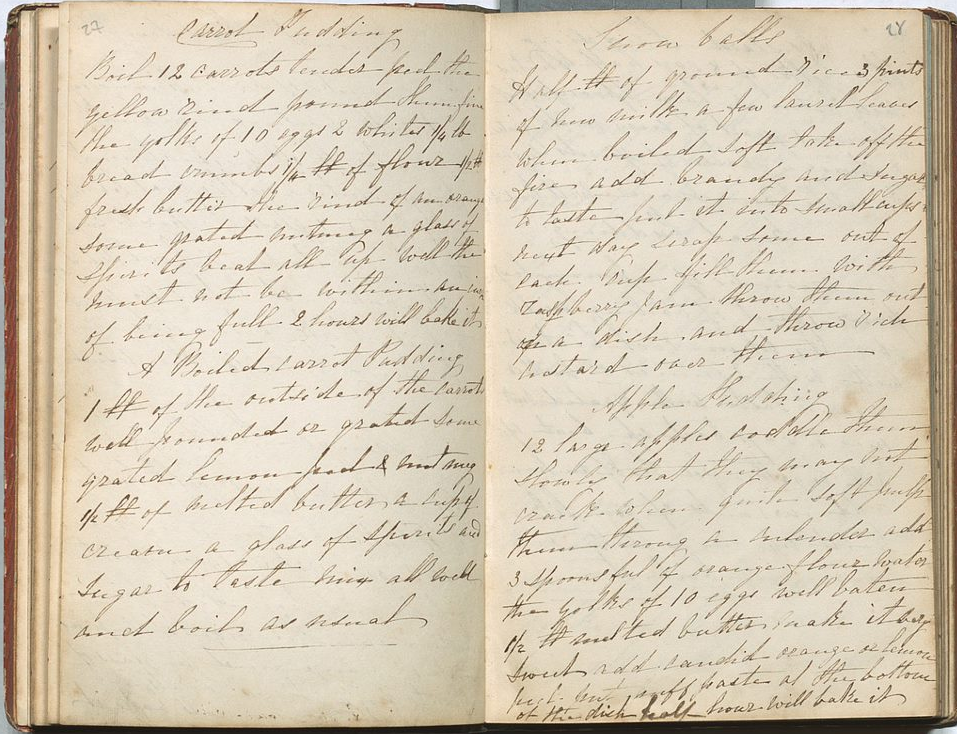
U.369, Special Collections, UCC Library.
Recipe Book: Mrs Anne Ryan
The recipe book that we used for our project was presented to the Library by Mrs Anne Ryan, from Glasheen, Cork. It consists of marbled boards and is missing one cover. It contains 156 pages with a mixture of recipes and remedies. It has recipes for Beef Tea, Genoa Pastry, Elizabeth Pudding and much more. Thankfully for us, Mrs. Anne Ryan’s recipe book was much easier to read.
We spent days reading the recipe books and typing up the recipes into a document, which then was entered into Scalar along with correlating media images. We linked all the ingredients as tags to connect our recipes together. Below is an excerpt from Mrs. Anne Ryan’s recipe book, showing recipes for Jam Sauce, Hot Syrup Sauce, Orange Curd, Apple Charlotte and a Christmas Pudding.
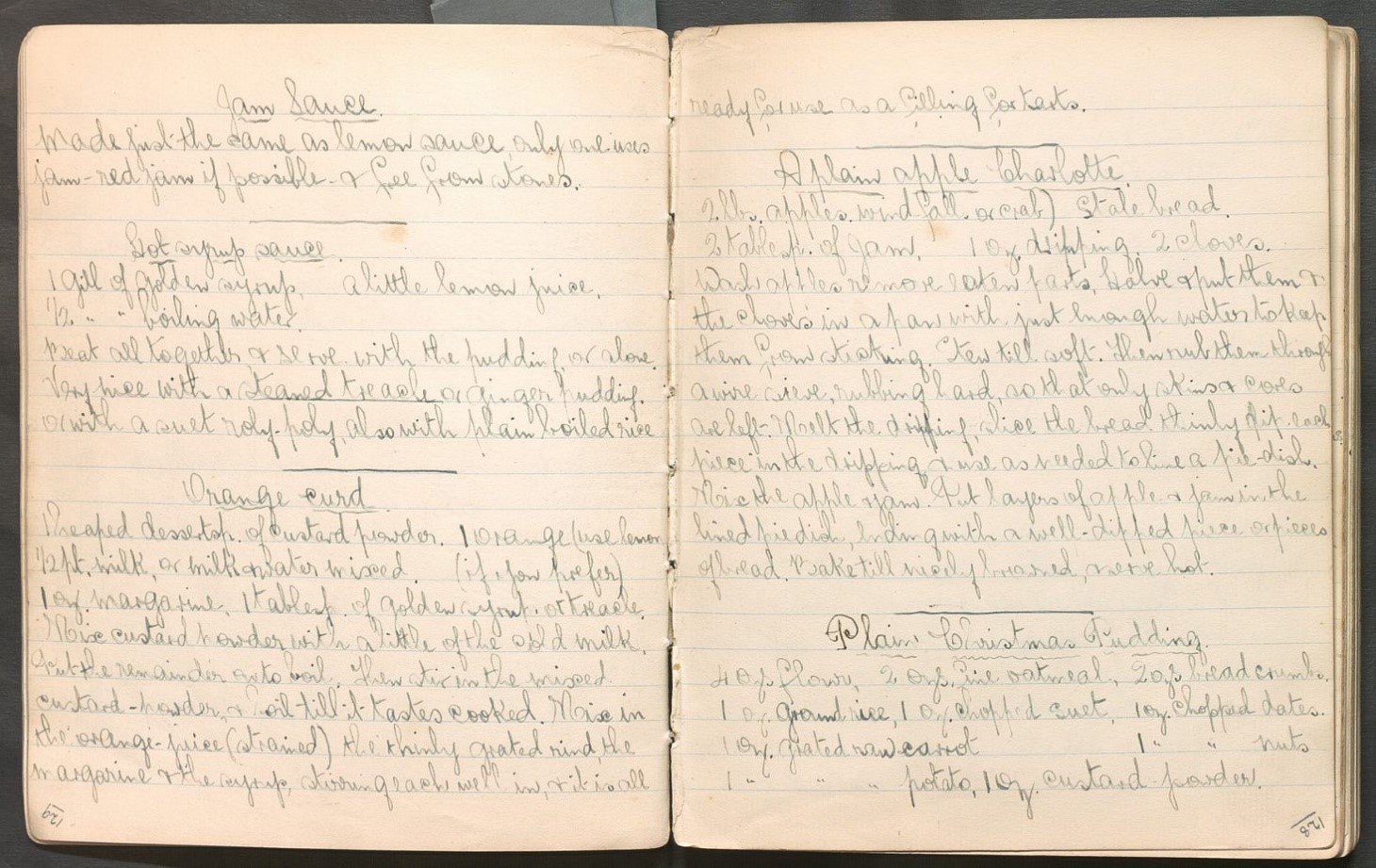
As you can see from comparing the samples from the two recipes, there is a significant difference in the ease of deciphering the handwriting.
Conclusion
Overall, we found the process of using Scalar quite challenging. We would recommend that if you are considering using Scalar for a project, you should consider the context of the project you are working on. Scalar isn’t very flexible for just any type of interactive project. You should consider what you are expecting of the software, what functions you want your project to have and how cooperative you want it to be. The finished product is of good quality, although it took weeks of trial and error as the user manual is not easily comprehensible. We would only recommend Scalar for those who want to create something that is content focused with strong visualisation needs.
